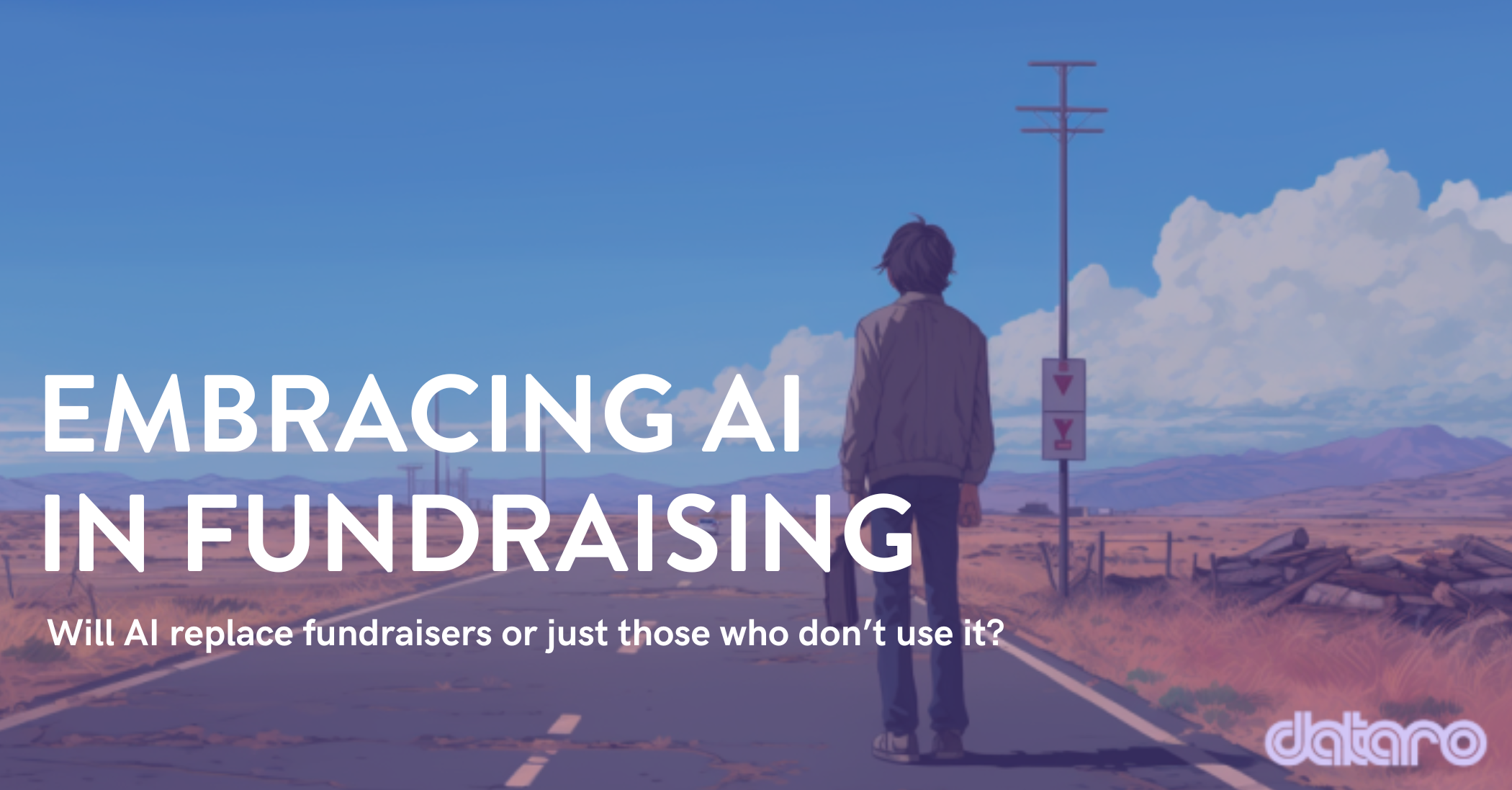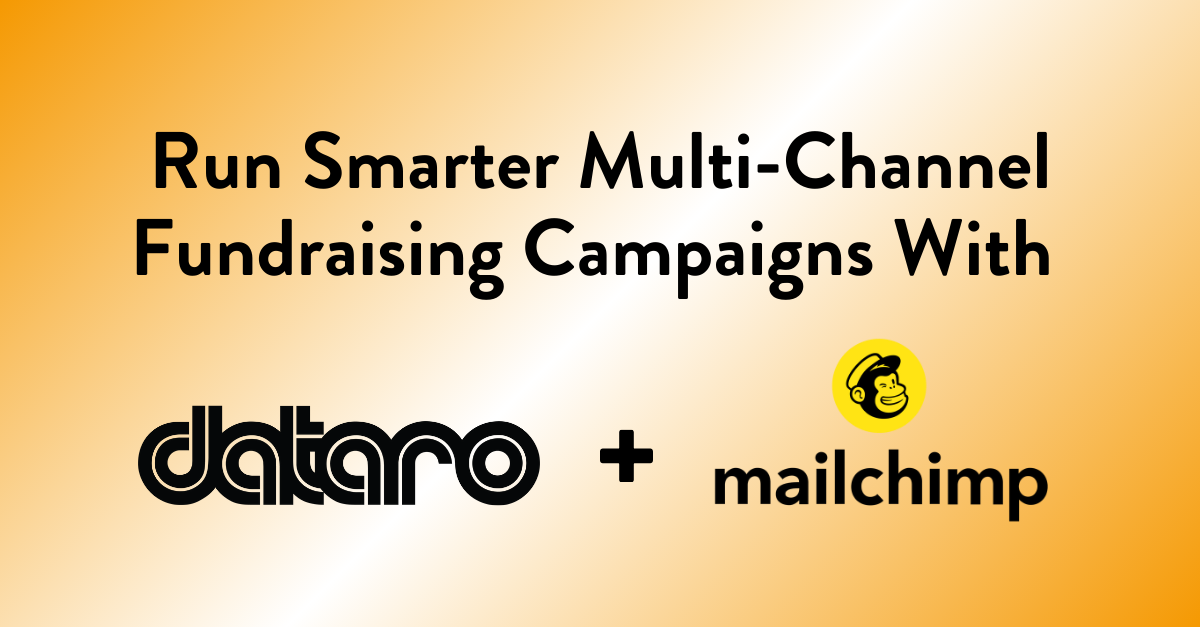
Should fundraisers not using AI prepare to be left behind?
Tim Paris –
In the realm of fundraising, I’ve noticed an interesting situation play out when it comes to donor data. Having worked with hundreds of nonprofits over the years, I’ve seen the immense resources, funds and effort they invest in collecting, storing and managing their donor data. From complex CRM migrations to sophisticated data warehousing systems, the dedication is undeniable. Even the painstaking manual entry and coding of data reflects a commitment to gathering crucial insights about their supporter base.
But despite these efforts, I’ve seen many nonprofits fail to fully capitalize on the data they have and the solutions they’ve built. It’s like having a treasure trove full of insights about their donors and opportunities to drive innovation and fuel growth, but no key to access them.
AI is the key to unlocking more donor insights
I believe the key to realizing the full potential of your nonprofit’s donor data is AI. Predictive AI technologies, like machine learning models, transform what was once considered a challenge in fundraising — how to extract actionable insights from a vast amount of donor data and turn it into an opportunity to improve fundraising outcomes. Because let’s face it; humans have significant limitations when it comes to crunching large volumes of data and turning it into something meaningful and actionable.
Machine learning models (a type of AI) on the other hand, can effortlessly crunch billions of data points in mere moments, surpassing any human capacity in terms of speed and accuracy. And unlike humans who rely on intuition and experience, machine learning models dig deeper, uncovering intricate connections between data and identifying patterns that may otherwise go unnoticed.
The predictive prowess of AI is simply unparalleled – it can precisely gauge donor affinity and accurately forecast the likelihood of specific donor actions, empowering fundraisers to shape more effective donor engagement strategies.
I’m not saying AI will replace fundraisers. It won’t. But fundraisers that use machine learning in their fundraising practices will replace those that don’t. That’s because AI will enhance their ability to make data-driven decisions that improve the donor experience and achieve better fundraising outcomes, while streamlining their processes and improving efficiency. And it’s easier to implement than you may think.
Leveraging AI in fundraising helps nonprofits make the most of their existing data. The insights about individual donors and their broader supporter base can revolutionize the way they fundraise, streamline their operations and drive a whole new level of impact for their cause.
But AI in fundraising has evolved beyond just deep data analysis and donor predictions…
Just as AI can unlock the untapped potential of donor data, the emergence of generative AI technologies like ChatGPT provides a new opportunity for fundraisers to unlock their productivity, fuel content creation and improve donor communications.
With limited time and resources, nonprofits often struggle to reach and engage donors on a meaningful level. Human capacity can only stretch so far. New generative AI technologies, on the other hand, enables fundraisers to scale their efforts more efficiently and engage donors in a more personalized way.
Undoubtedly the invention of marketing automation platforms has helped fundraisers send more communications to their donors with greater ease. But these solutions have not necessarily improved the quality of communications. My bug-bear with mass or generic communications is they lack the personal touch that connects with donors on a deeper level. That’s why I find the idea of leveraging ChatGPT’s capabilities incredibly exciting and why we created the first AI writing tool for nonprofit fundraising use – Dataro’s AI Assist.
Right now, you can provide Large Language Model tools like ChatGPT with specific information about a donor – their interests, age, and background – and witness the magic unfold. ChatGPT can generate a letter or message that not only addresses the donor’s preferences but also acknowledges their unique concerns. This level of personalization showcases a genuine understanding of the donor’s perspective, fostering a stronger connection between the fundraiser and the donor.
Generative AI tools are key to helping fundraisers personalize donor communications at scale and improving donor engagement. By demonstrating a profound understanding of each donor’s individuality, we can significantly enhance their level of engagement and increase response rates. It’s an opportunity to make every interaction count and make donors feel valued and heard.
Now is the time to embrace AI in fundraising to improve fundraising operations and increase impact.
AI in fundraising has transitioned from being a trend, or a choice into an outright necessity. It should be seen as a tool, a robust partner, that not only saves fundraisers time but also enhances their ability to make informed decisions and scale fundraising efforts.
Organizations that overlook integrating AI into their fundraising strategies stand to miss out on the insights and operational efficiencies it brings, making it tougher to manage and engage donors effectively in the future. So, my advice to nonprofits and fundraisers today is to take the time to learn and invest in leveraging AI technologies now. It’s not too late and you’ll only improve efficiency and deliver more impact for your cause. Because working with more than 200 global nonprofits we know that fundraising teams who leverage AI tools in their operations are optimizing their fundraising strategies, improving resource allocation, building better donor relationships, and raising more funds to advance their mission.
In my opinion, AI is a powerful tool that empowers nonprofits and fundraisers to make a lasting impact and create positive change in the world. And that can only be a good thing.
Here’s a quick summary of the ways nonprofits are using AI in their fundraising work, and how this technology is set to revolutionize the way the nonprofit sector fundraiser.
Click here to get the Complete Explainer of Artificial Intelligence for Nonprofits.
How is AI being used in fundraising?
AI can deepen a fundraiser’s understanding of their donors and is revolutionizing the way nonprofits engage with their supporter base.
We can think about AI technologies as helping to answer the following questions about your nonprofits’ donors and fundraising activities:
- Who should we contact?
- When should we contact them?
- How much should we ask for and how should we reach out?
- What should we say to them?
1. Machine Learning to answer “Who”, “When” and “How”
An area where AI is extremely useful is in data analysis and predicting the future behavior of your existing donors. In fundraising, Machine Learning can be used to analyze donor data and identify patterns that can help organizations better target potential donors.
Machine Learning models (like the ones we build at Dataro) are skilled at analyzing extremely large datasets – like your donor database – to accurately identify patterns and trends, and predict future outcomes. In fundraising, this means that Machine Learning models can help nonprofits identify their best donors for various fundraising efforts, based on their likelihood to give a gift if solicited. Predictive AI models can tell you which donors to ask and when to ask for donations, how many to include in your campaign list and even personalize donation ask amounts to improve response rates.
Machine Learning can also help organizations optimize their fundraising campaigns. By analyzing data on past campaigns, it can identify which tactics were most effective and which were less so. This allows organizations to adjust their strategies and focus on the tactics that are most likely to result in donations.
2. Large Language models to answer “What”
Using GPT technology and tools like Dataro’s new AI Assist, fundraisers can generate entirely new pieces of content from scratch, in seconds. For example, if a fundraiser has developed a first draft piece of campaign content, like a direct mail letter, they can use Large Language models to enhance it, creating a multitude of variations for different donor segments and different communications channels. For example, writing direct mail letters specifically to lapsed donors, or writing appeal emails to young active donors, or generating content to increase the number of monthly donor conversions via social media. Developing highly tailored communications can only help improve the donor experience. For the donor, they will be more engaged and have a better relationship with the charity that speaks to them like an individual, not a segment. For the fundraiser, they will be able to create a larger volume of tailored communications in significantly less time, with better fundraising outcomes.




